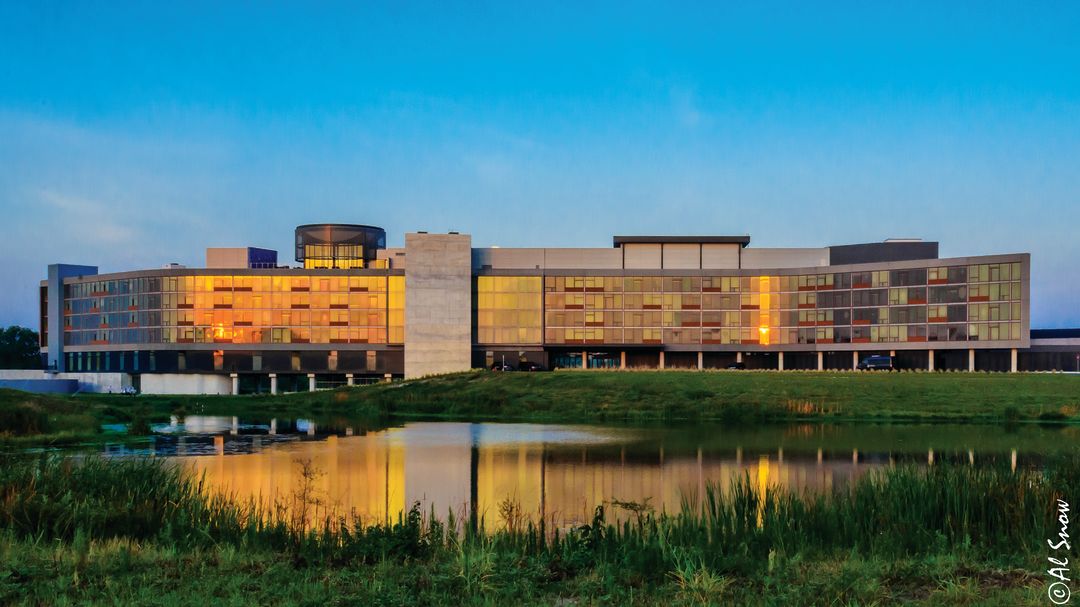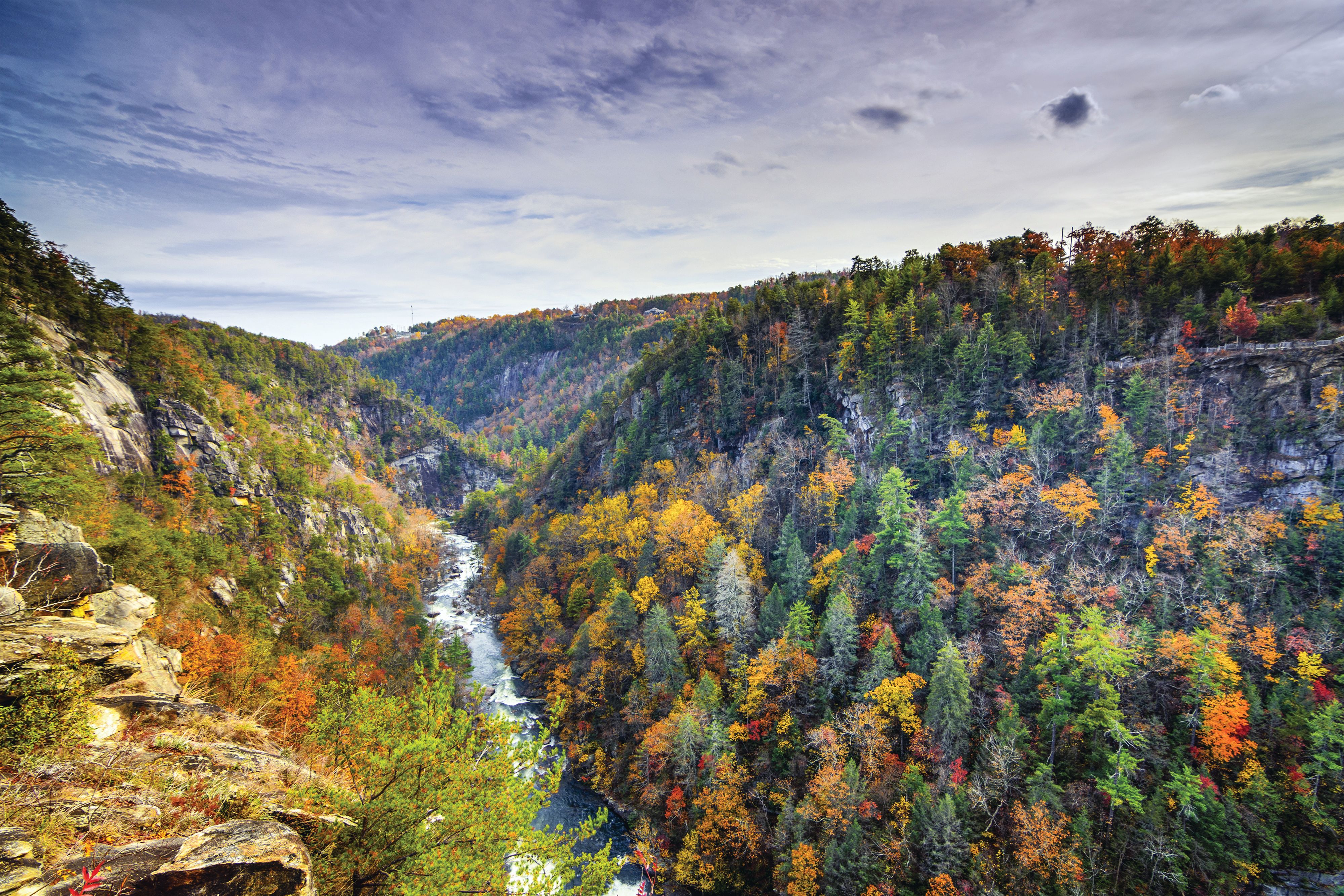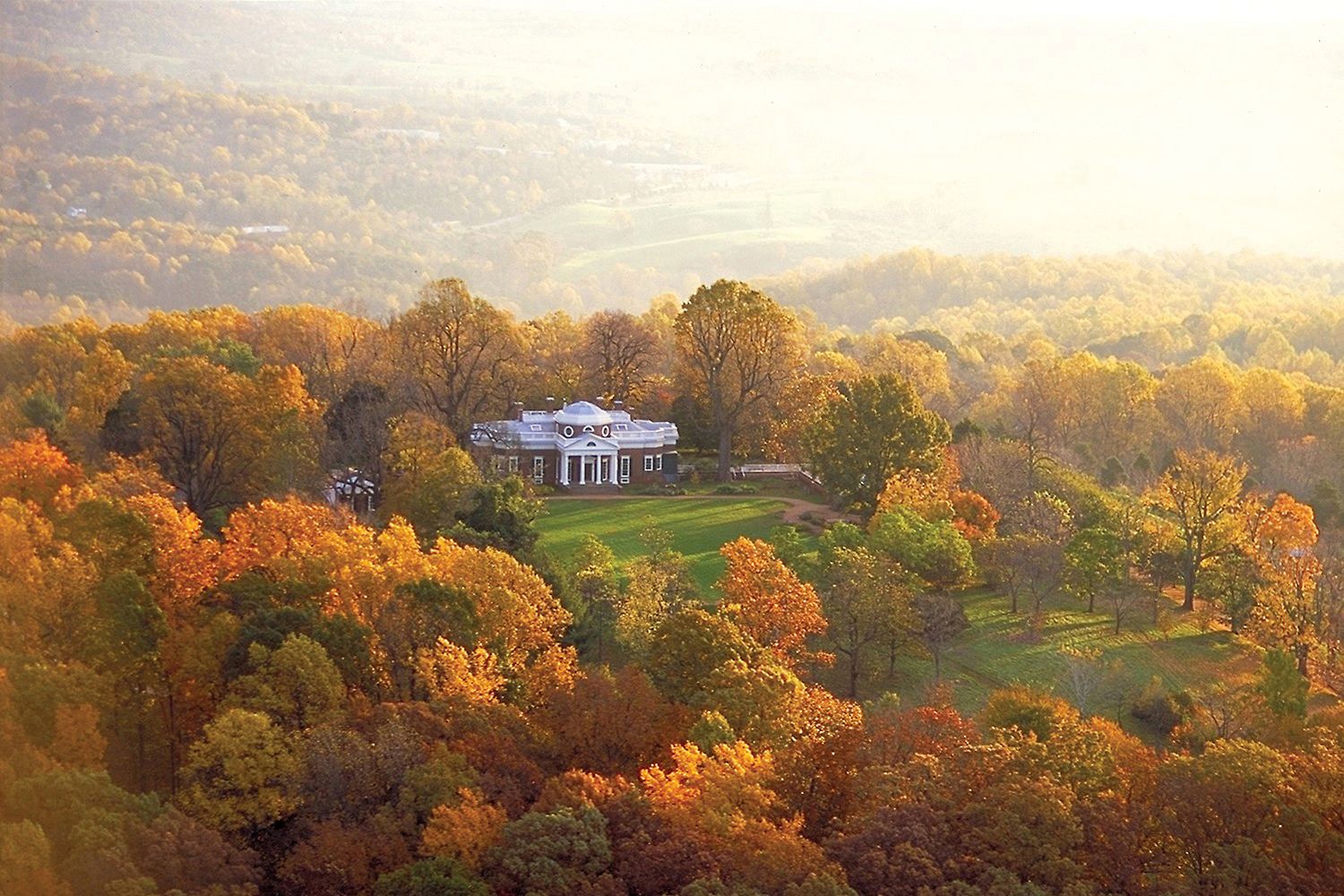Journey Into Bone Valley

The ultra-modern Streamsong resort.
Image: Al Snow/Visit Central FL
Here at Sarasota Magazine we pride ourselves on telling our readers where to go. In practically every issue we feature a weekend getaway or a “one-tank” day trip to some nearby locale, where you can do a little sightseeing, have a wonderful meal, shop, and learn something about our state and its history.
The competition in the office over who gets assigned each trip can get fierce. The editor’s little favorites get all the good ones—Key West, Orlando, Palm Beach—whereas those not in her favor are sent to the Floridian equivalents of Siberia: Steinhatchie, Palatka, Belle Glade. So you can imagine my feelings when I discovered that I had just been assigned the Bone Valley.
“The Bone what?” you are asking. So was I. It’s like Area 51 in Nevada. Nobody goes there. It’s a vast, virtually empty part of the state. Millions of years ago it was underwater, but as the climate changed, it became land and a graveyard for all sorts of prehistoric creatures, making the ground dense with nutrients.
Environmentalists say it has been abused by giant corporations for more than a century. They strip-mine the land, process it with toxic chemicals and turn it into phosphate fertilizer. Who would want to go there, even for lunch?
Well, I went. It turned out to be so interesting that I’ve been back twice.
For a place considered the middle of nowhere, the Bone Valley is remarkably close. Head up I-75 to Sun City Center, turn east, and you’re there in less than an hour. You’ll notice that things start to look different around the aptly named Fort Lonesome. The effects of the mining are becoming evident—berms and hills of depleted land, ditches, swamps with dead trees. This extends northward 25 miles or so, up to Mulberry and Bartow, and eastward for another 20.
It’s a strange atmosphere, bleak and virtually deserted. Any temptation to explore is thwarted. Everything is fenced off and “No Trespassing” signs are all around. Enormous power lines run along the road. In the distance you glimpse enormous city-sized plants, covered in white dust. There doesn’t seem to be any way to get closer to them.
And no people. No little towns. Sometimes a truck drives by. You start to feel like you’re in that Alfred Hitchcock movie North by Northwest. A plane might appear at any moment and try to mow you down like Cary Grant.
The spooky atmosphere is due to Mosaic, the giant conglomerate that owns 280,000 acres of Central Florida and does most of the phosphate mining. They have their own railroad, their own electric company and pretty much control everything that goes on in the Bone Valley. I’m certainly not going to debate the pros and cons of Mosaic. Personally, I feel a little sorry for the poor conglomerate. They have a tough row to hoe. Dig up vast amounts of dirt, process it with toxic chemicals, ship it to China, and try and keep everybody happy. It just doesn’t work.
But enough worrying about Mosaic. It’s time for lunch. And it turns out that our adventure is about to take an even more Hitchcockian turn. We’re dining at Streamsong.
Streamsong is the luxurious golf resort that Mosaic has built in the middle of the Bone Valley. It has impressive credentials. Golf Digest ranks its two courses No. 1 and No. 3 of all the public courses in Florida.
You enter via a long winding road, and suddenly everything changes. Some genius has figured out a way to landscape the depleted earth so that it becomes beautiful. The heaps of dirt have been transformed into delicate little hills, the ditches have been reshaped so that they become lovely ponds, and everything is covered with elegant vegetation—low trees and pampas grass of many varieties. It looks like Northern California. There’s no place like it in Florida, maybe even the world.
Then the resort appears and elicits another gasp. It was built in 2014 by Tampa architect Alberto Alfonso and is an ultra-modern building with a slight curve, massive and almost sci-fi in appearance.
Inside, the style is leather, steel and stone. Vast corridors look out on an artificial lake, and the guests seem a little lost in all that space. The guests, by the way, all appear to be high-level executives here for golfing vacations, mostly in all-male groups, but some with wives who look a little bored as there isn’t much to do but play golf or go to the spa.
You’ll probably want to eat at p205. (That’s the formula for diphosphorus pentoxide, a chemical that causes skin burns, eye injury and pulmonary edema, and which may not be the best name for a restaurant.)
The food is appropriately pricey and the equivalent of the grill at the country club. I was going to order the fish until I remembered that a sinkhole recently opened up at a Tampa-area Mosaic facility and could expose the aquifer to millions of gallons of radioactive water. So I ordered the burger instead.
The isolation of Streamsong is complete. There’s nothing for miles around, and here you are, in this amazing bubble of remarkable architecture and rich Republicans. (Dress appropriately). I began to feel that I was an interloper and that behind the smiles of the staff and the affluence of the guests, something sinister was going on. Not for a moment am I suggesting that anything like this is really happening, but the feeling of being in a Hitchcock movie is so intense and so thrilling that it’s worth a day trip just to experience it.
As fascinating as Streamsong is, it was a relief to return to the real world. My next stop was Fort Meade, the nearest town to the east, and one of the classic small towns of Central Florida. It’s home to only about 5,000 people and has some beautiful old houses, including the town’s grande dame, a 1901 Queen Anne with five bedrooms that’s currently on the market for $155,000. The best restaurant in town is a home-cooking place famous for its fish sandwich, and the second-best is a guy who sells barbecue by the side of the road.
And at 110 W. Broadway, you may notice a rather elegant little storefront with the name La Chinoiserie. It was closed, but I peeked in the window and felt like that English guy who discovered King Tut’s tomb. It was full of the most wonderful things. I called the owner to make sure she’d be open on my next trip back and thus discovered what immediately became my favorite antique store anywhere.
Virginia Cagle, the proprietor, has put together an amazing inventory of china, objets d’art, paintings, estate jewelry and fine French furniture. In New York or Atlanta, this store would be a find. In Fort Meade, it’s mind-boggling. I asked Virginia how she has managed to stay in business, much less prosper. “If you have good antiques, people will find you,” she replied with a smile.
So that’s the Bone Valley—an elegant fauteuil here, a 10-story pile of toxic dirt there, with a smattering of fossils, astonishing architecture, and the most beautiful golf course I’ve ever seen. It’s where all the great themes of present-day Florida life come together. Climate change, politics, the environment and over-the-top luxury living. I can’t wait to go back.



